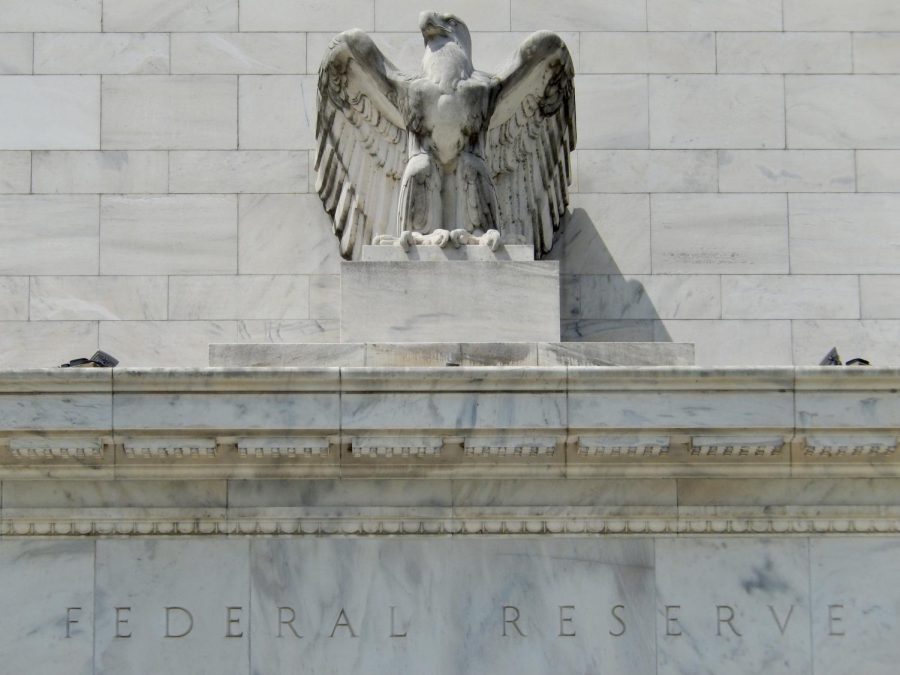Federal Reserve raises rates another 75 basis points for November
November 6, 2022
Federal Reserve Chair Jerome Powell announced a 75-basis-point increase for interest rates on Nov. 2, marking the fourth consecutive rate hike in its efforts to quell inflation.
The Fed gave mixed signals from its quantitative stance. It appeared hawkish due to its 75 basis point increase, but Powell’s accompanying speech sounded doveish as it signaled upcoming hikes by lower increments.
The major U.S. stock indexes dipped after the speech. The Dow Jones Industrial Average fell 1.65%, the Nasdaq composite fell 3.36% and the S&P 500 fell 2.5%.
The Fed is now at a target range between 3.75% and 4%, which is the highest range since the 2008 financial crisis.
“Inflation remains elevated, reflecting supply and demand imbalances related to the pandemic, higher food and energy prices and broader price pressures,” the Fed said in a statement.
The central bank also reiterated that it is still dedicated to its goal of bringing inflation down to 2%.
Powell maintained that inflation would bring much more economic misery compared to a recession, arguing hawkish hikes are the best way to rein in inflation.
“My colleagues and I are acutely aware that high inflation imposes significant hardship as it erodes purchasing power, especially for those least able to meet the higher costs of essentials like food, housing, and transportation,” Powell said in a news conference. “We are highly attentive to the risks that high inflation poses to both sides of our mandate, and we are strongly committed to returning inflation to our 2% objective.”
But not everyone is in favor of these hawkish hikes. Economists hope for a pivot to an increase of 50 basis points in the Fed’s December meeting, especially after the consumer price index metrics yielded positive news for September.
This rate hike was a foregone conclusion on the Fed’s part, and even the markets expected it.
Powell’s doveish speech, however, came as a surprise. The Fed has focused on Keynesian economics in hopes of bringing down inflation, which can manifest in two courses of action.
The first is establishing a way forward in the Fed’s rate hike process, in which the tightening of money supply does not affect the credit demand in a way that leads to a recession. This may be the most plausible case so far due to the consequence of this tightening.
The second way is to slow down the pace of rate hikes. This would let inflation bite consumers a little more, so that the Fed would be able to avert a recession and permit the economy to grow but at a slower pace. This case may look the most reasonable of all, but this has a downside.
In the second scenario, the labor market continues to tighten enough so it does not slip into a recession. This might lead corporations and businesses to function in an environment of liquidity crunch.
“The challenge for the Fed is to signal a slowdown without letting the market develop a narrative of the Fed ‘pivoting’ away from its current priority of cooling underlying inflation pressures,” Luke Bartholomew, a senior economist at the United Kingdom-based investment company abrdn PLC, told CNN.
This might be a unique situation where there is a potential liquidity crunch, but companies still have positions to fill.
Some experts believe the Fed should continue to raise rates, even if it comes at a cost of higher unemployment because the issue of inflation has yet to fade.
Unemployment is expected to climb to 4.4% in order to tame inflation. It is currently at 3.5%.
December’s Fed meeting will be one that investors will anxiously anticipate, as it will determine whether the central bank’s way forward will remain hawkish or shift to a more doveish path.









